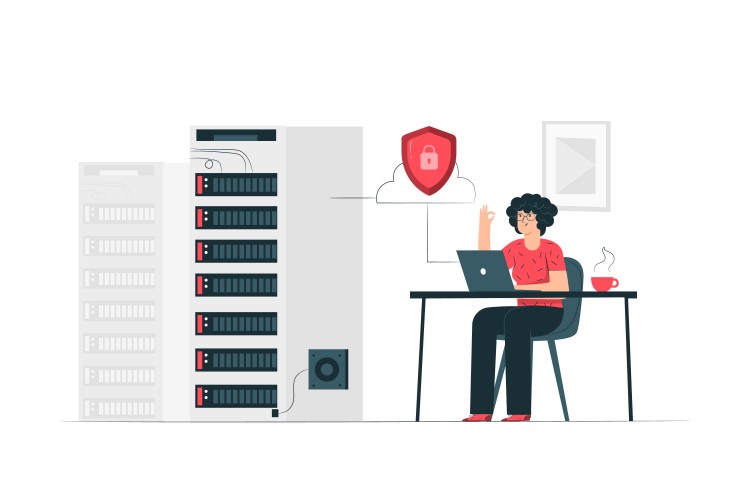Personal loans are a flexible financial tool, but they come with their own set of challenges. It is not always simple to find the right solution. Before making your choice, it is essential to learn more about this type of loan. Here are some tips to help.
Table of Contents
Toggle1. Evaluate Interest Rates and Fees

Be vigilant about variable interest rates; these rates fluctuate and can escalate the cost of your loan over its lifespan. Conversely, fixed interest rates stay the same, ensuring stable and predictable monthly payments. The best approach to find the best personal loan is to use a well-known and reliable platform like CreditNinja.
It’s important to consider potential penalties for early loan repayment. It can be a factor if you plan to refinance or if you come into unexpected funds. Moreover, some loans may include insurance or other optional products, which can add to the cost.
Make sure to always read the fine print and understand every component of the loan’s cost before making a decision.
2. Check Your Financial Health
An ample savings account can be a safety net, reducing the risk associated with taking out a large loan. Reflect on your future financial goals, such as buying a home or saving for retirement.
These goals might be impacted by taking on more debt. A comprehensive assessment of your financial health should include not only your current standing but also your long-term aspirations.
3. Learn More About Limits and Criteria
Selecting a lender known for their reliability and good customer service can significantly benefit borrowers, particularly in instances of challenges or questions arising throughout the duration of the loan. Furthermore, certain lenders might present advantageous terms to individuals who boast stellar credit scores or have pre-existing financial engagements, like a savings account or a home loan.
Thoroughly exploring these possibilities can open the door to more attractive loan conditions. It’s essential to understand that the ideal lender offers more than just substantial loan sums; they provide a dependable and satisfying borrowing journey.
Effective communication and support from a lender throughout the loan’s lifecycle can greatly enhance the borrowing experience and provide peace of mind.
4. Consider the Purpose of the Loan

When borrowing for a specific goal, research the typical costs associated with that goal to avoid over or underestimating the loan amount. For example, if the loan is for home renovations, get quotes from contractors to gauge the budget accurately.
Additionally, consider the potential return on investment for the loan. For instance, a loan for education or home improvements might increase your property value or earning potential, justifying a higher loan amount.
5. Plan for Repayment
Create a detailed repayment plan that includes due dates and the amount due each month. Consider setting up automatic payments to avoid missing a payment. Think about the implications of your loan on other financial decisions. For example, how will this loan payment affect your ability to contribute to a retirement plan or save for other goals?
If possible, simulate financial scenarios where your income might be reduced, such as job loss or unexpected expenses, to ensure you can still manage loan repayments.
6. Be Aware of Details in Long Term Contracts
Extending the duration of a loan can lead to lower monthly installments, but it’s crucial to consider the cumulative interest over the entire term. This total can be surprisingly high, often surpassing the principal amount borrowed. It’s wise to explore the possibility of making additional payments without incurring penalties, as this can significantly decrease the total interest.
Additionally, reflect on how a long-term loan fits within your broader financial objectives. Committing to a lengthy loan period could restrict your capacity to manage other financial obligations, such as acquiring a mortgage or financing a vehicle.
7. Avoid Borrowing to the Maximum

Excessive borrowing can lead to a debt spiral, where you’re borrowing more money to pay off existing debt. This can negatively impact your financial freedom and stress levels. Remember, circumstances can change – job loss, health issues, or other unexpected expenses can make high loan repayments impossible.
Decide whether insurance products like loan protection insurance are appropriate for your situation, offering a buffer in case of unforeseen circumstances.
Regularly review and adjust your budget to ensure you’re living within your means and not relying on loans to cover regular expenses. The key is to be more responsible and consider all options before deciding on method of getting money.
8. Protect Your Credit Score
Your credit score is a vital aspect of your financial profile. It not only affects your ability to borrow but can also influence interest rates, insurance premiums, and even employment opportunities.
Regularly monitor your credit report for errors and promptly address them. Diversify your credit mix if possible, as this can positively impact your score. Avoid applying for multiple loans or credit cards simultaneously, as this can create inquiries on your credit report, temporarily lowering your score.
Responsible credit management means not only paying attention to how much you borrow but also how you borrow and repay.
9. Explore Alternatives and Negotiate Terms

Prior to finalizing a decision on a personal loan, it’s important to weigh various other financing avenues. Alternatives like a low-interest credit card, a home equity line of credit (HELOC), or borrowing from acquaintances could be more apt for your situation. These options present their unique advantages and drawbacks, ranging from potentially lower interest rates to more adaptable repayment schedules.
However, they also involve distinct risks, such as the possibility of using your home as security for a HELOC. Carefully assessing each option’s benefits and potential hazards is essential to making a choice that aligns with your financial needs and risk tolerance.
Last Words
Securing a personal loan is a significant financial decision that demands careful consideration and informed judgment.
The crucial factor is finding equilibrium between addressing immediate financial requirements and nurturing long-term economic well-being. Intelligent borrowing transcends merely acquiring funds; it involves making decisions that resonate with overarching financial ambitions, securing a future marked by stability and security.
Ultimately, a loan managed with insight and discipline can serve as a beneficial financial instrument, demanding not only foresight but also a committed and proactive strategy in handling financial resources.

